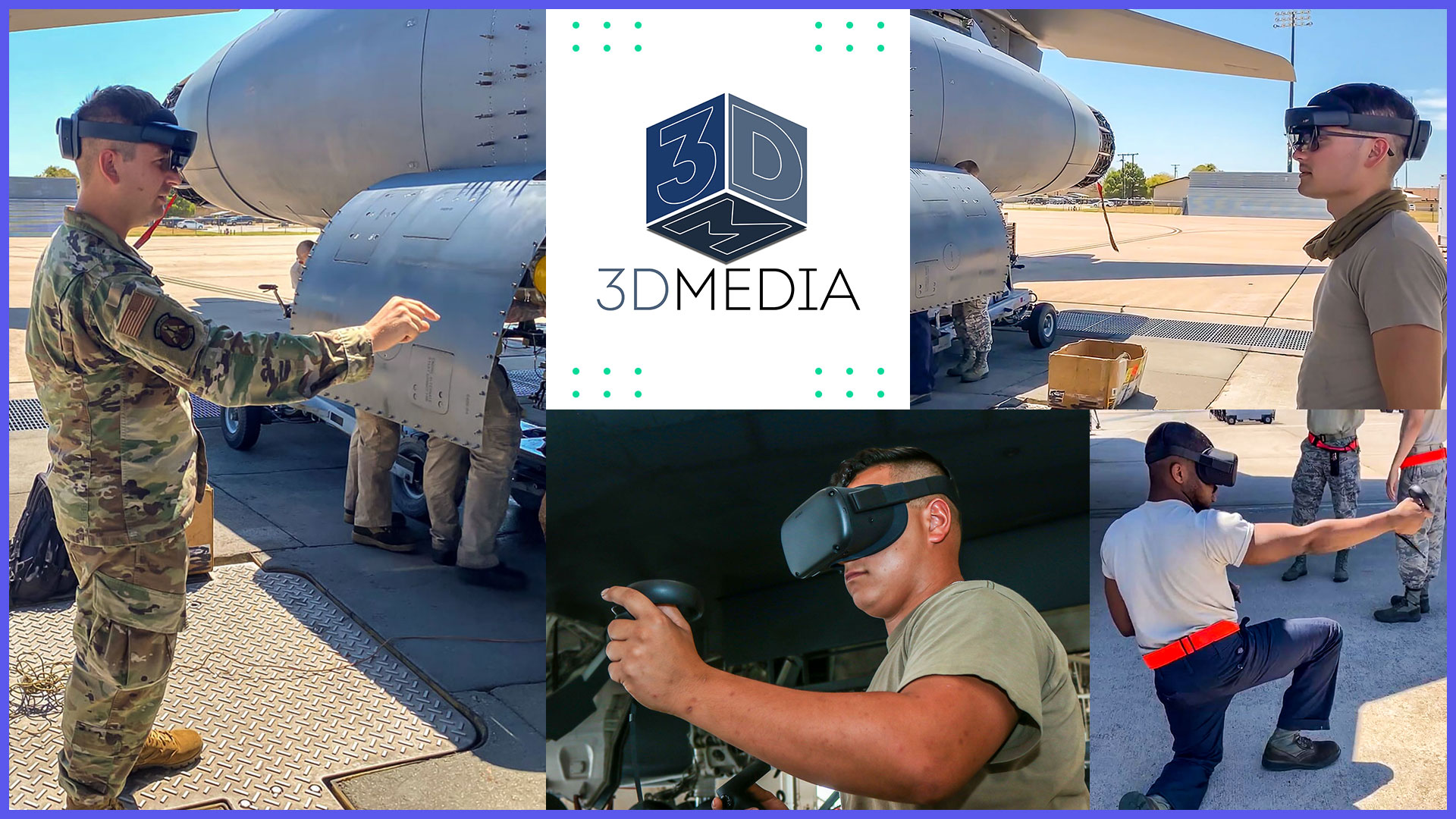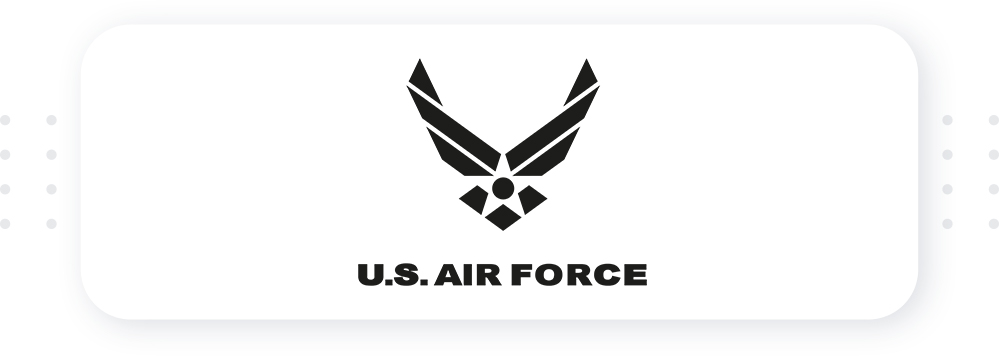Case Study: How End-User Empathy is Vital to 3D Media’s Success
- March 15, 2021
- Customer Stories

Today, we are starting a series of blogs where we look to understand what XR solution providers have learned in the process of creating, deploying, and scaling XR. Our intention is to get a better understanding of what makes some companies successful, and others not. What are some of the unexpected challenges? What are some of the lessons learned?
We all know XR is the technology of the future. We want to help accelerate that path by providing deep insights into companies who are getting it right. I want to thank Daryl Roy, Founder & CEO at 3D Media, for spending some time with me and being the first of many to share their insights with the industry.
3D Media Case Study at a High Level:
- Company: 3D Media
- Interviewee: Daryl Roy, Co-Founder & CEO
- Notable Clients: ExxonMobil, U.S. Air Force, United Vision Logistics
- Main challenge faced: Getting rapid feedback throughout the iteration process
- Secret sauce: End-user empathy, sustainment, and security

What makes 3D Media successful? What's your secret sauce?
“To us, it’s all about the end-user, understanding their problems, understanding the issues that they face every day, the ones that are obvious and the ones that are not so obvious.
One thing that really gave us an edge was the fact that most of us in our team have had careers in the industries we serve. We’ve seen these fields from multiple different angles, and we understand, to a degree, the problems that these individuals face. We have a certain level of built-in end-user empathy because we used to be the end-users.
But when we develop these trainings, we can never go into a situation assuming that we know all of the problems that they’re facing. We go into these engagements with a high level of curiosity, where we want to watch these end-users perform the tasks that we’re helping train on. We want to take videos and pictures. We want to get their procedures and dive through them and we want to be out there doing it with them where we can. To see what it feels like, what it sounds like, all the things that affect that complete immersion in the experience, because retention comes from immersion in a lot of these events. Taking yourself to that place that you’re building and really getting engaged in the operation. Engagement is key. So we actually spend between six to twelve weeks just learning the processes, story-boarding, going back and forth with end-users. So that before we model a single asset, before we write a single line of code, we understand the problems and we understand the processes as much as we can.”
What are some of the unexpected challenges you faced along the journey?
“Well, when you’re doing a process like this, obviously you want to be as close to the end-users as possible, and you want to get as much input as you can as you iterate through these processes. One of the main challenges was getting rapid feedback throughout the iteration process. Sending APKs via dropbox and hoping your end-users can figure out how to side load, or having to schedule onsite demos every time we have an update is not ideal if you are looking to quickly get feedback.
And that became quite a challenge early on. But with ArborXR, you can do over the air updates, remote monitoring of the devices and so on and so forth. That’s when you start to look at those bottlenecks and those challenges that slow down the development process, and you’re able to overcome them, mitigate them in the planning process.”
What are some things you would do differently now versus when you started?
“First thing I would do is ask them if they have any reusable assets to accelerate the process. Our goal is to democratize this technology to make the development process faster and more affordable. If organizations have reusable assets, environments, CAD models, anything like that, that we don’t have to rebuild, that adds a ton of value.
Another thing we do now is ask them what their sustainment plan is? How are we going to ensure that we’re not going to build a pilot and then run out of funding in the future? Who are the individuals that have a say in these decisions as to how this is built? Who are the people that can bring the ax down on this? And how do we ensure that their needs are met in this as well? Those are some key things that over time I’ve learned are things that you’ve absolutely got to consider throughout this process. Who are the people affected, both positively and negatively, and how do we meet their needs?”
As companies go from pilot programs to full-fledged deployments, what are the differences in requirements and challenges?
“It’s tying into legacy systems because then you’re getting a third or more party involved, tying into legacy systems for learning management, personnel management, all these different things. That’s when you’re bringing more people onto the bus and you’ve essentially got to start those relationships from scratch, unless you’ve got that strong rapport with your end-user. That’s why again it is so important to get as close to your end-user as possible throughout this process. If you don’t have a strong relationship with your end-users so that you don’t have to start from scratch in the relationship building process. Your end-users often start from a much more advanced relationship point than you, which speeds up this process immensely.
Scalability is also an issue, when you start to go from 10-15 headsets to 100+, you just have to have a platform like ArborXR to help you manage the devices and app updates to those headsets.”
What are a few key takeaways from your experience working with XR in the industries you serve?
“I think the key takeaways are end-user empathy, sustainment, and security. Those are going to be the key things here, but those are the things that you’ve got to have, to have a successful outcome. While it is nice and we always strive for the highest resolution environments and the coolest interactions and the best output into our learning management system and all these other things, if you’re not focused on end-user empathy, if you’re not focused on sustainability, if you’re not focused on security… Those are, to me and my position as a CEO, those are the key things that determine success and failure in these industries.”
About 3D Media
Founded in 2016, 3D Media is a woman-owned company based in Thibodaux, Louisiana. 3D Media is a leader in Virtual and Augmented Reality for industry. Using proprietary processes we build your facility to exact detail. Our VR tools allow training in 100% controlled environment eliminating risk, and saving your company money. 3D Media’s Augmented Reality tools assist operators and technicians in completing every task error free, every time.
3D Media's Notable Clients:
ExxonMobil
Building VR tools for plant operators at a refinery.

U.S. Air Force
Building augmented reality human performance tools and virtual reality training simulators for aircraft field maintenance.

Interested in getting started?
Start using ArborXR free today. If you have any questions, visit our website or email us at [email protected].
Subscribe to stay in the know!
